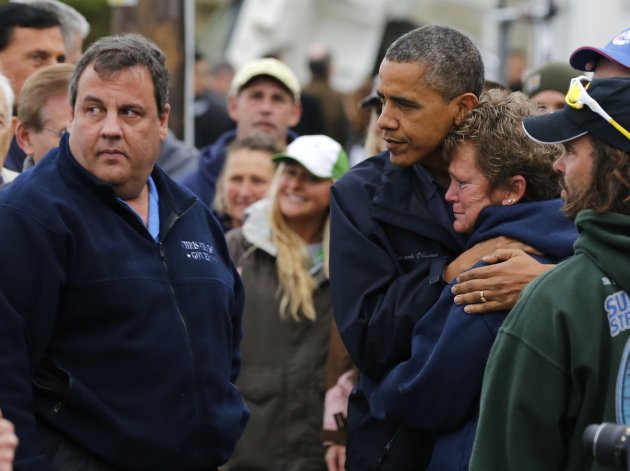LOS ANGELES (AP) — Naysayers would have you believe Disney's purchase of Lucasfilm can only mean one thing: Bambi and Mickey Mouse are sure to appear in future "Star Wars" movies taking up lightsabers against the dark side of the Force.
Not so, say experts who've watched Disney's recent acquisition strategy closely. If anything, The Walt Disney Co. has earned credibility with diehard fans by keeping its fingerprints off important film franchises like those produced by its Marvel Entertainment and Pixar divisions.
"They've been pretty clearly hands-off in terms of letting the creative minds of those companies do what they do best," says Todd Juenger, an analyst with Bernstein Research. "Universally, people think they pulled it off."
Though the Walt Disney Co. built its reputation on squeaky clean family entertainment, its brand today is multifaceted. Disney, of course, started as an animation studio in 1923 with characters such as Oswald the Lucky Rabbit, Steamboat Willie and Mickey Mouse. Over the years, the company ventured into live action movies, opened theme parks, launched a fleet of cruise ships and debuted shows on TV.
By way of acquisitions over the last few decades, it has ballooned into a company with $40.9 billion in annual revenue and a market value of $88 billion. Disney bought Capital Cities/ABC in 1995 for $19 billion, Pixar for $7.4 billion in 2006, Marvel for $4.2 billion in 2009 and this week, it said it will purchase Lucasfilm and the "Star Wars" franchise for $4.05 billion.
Disney's acquisition of Marvel Entertainment in 2009 offers the best example of how it might treat Lucasfilm and the "Star Wars" universe.
Marvel was in the midst of a storyline that would span several films following the smash hit success of its first self-produced movie, "Iron Man," in 2008. When Disney bought it a year later, it continued reading from the comic book giant's playbook, releasing in subsequent years "Iron Man 2," ''Thor," ''Captain America" and then this year, "The Avengers," which brought heroes from those movies together in one giant film that grossed $1.5 billion at the box office.
Now, "Avengers" director Joss Whedon is working on the sequel and developing a Marvel-based TV series for Disney-owned ABC.
Rick Marshall, a journalist and blogger who writes about the comic book and movie industries, was skeptical when Disney bought Marvel. But his doubts quickly melted when it was clear Disney wouldn't taint the Marvel universe by getting too involved.
"I was the first one to say there's going to be a Goofy-Wolverine crossover," Marshall said. "We haven't seen that... Disney was able to step away."
Recent history ought to assuage "Star Wars" fans who fear the Disney empire. But that hasn't stopped many of them from posting an array of video and pictorial mash-ups and jokes online as they poke fun at their darkest fears: Luke Skywalker staring into the distance at a mouse-eared sun and Darth Vader telling Donald Duck that he's his father.
What Disney did with Marvel was merely amplify its presence in theme parks, stores and theaters, observers say.
Disney's formula for success with Marvel was not to tamper with storylines, but to bring the existing franchise under its corporate umbrella.
Before it was acquired, Marvel paid Paramount Pictures a percentage of movie ticket sales to advertise its movies, make film prints and get them into theaters. Disney has those capabilities, so now that money doesn't go out the door. Disney also has a worldwide network of staff that help put Marvel toys on store shelves, expanding their reach and saving the money that Marvel used to pay third-party merchandise middlemen.
Owning Marvel also gives Disney a steady flow of super hero cartoons for its pay TV channel, Disney XD. These kind of logistical savings allow Disney to profit from ownership while not interfering in the creative process.
"Marvel does seem like it's running pretty independently and staying pretty close to its roots," said Janney Capital Markets analyst Tony Wible.
Disney's recent acquisitions have also filled gaps in its creative portfolio. CEO Bob Iger has said the company's $7.4 billion purchase of Pixar in 2006 was partly an investment in talent and a way to "grow and improve Disney animation." The deal brought John Lasseter, a former Disneyland employee, back into the fold as its chief creative officer of both Disney and Pixar's animation studios.
The purchase of Marvel helped Disney add characters that would resonate with boys at a time when the company was becoming known more for princesses, fairies and its fictional teenage rock star Hannah Montana.
The "Star Wars" franchise fills a hole in Disney's live-action portfolio, which suffered an embarrassing $200 million loss on the sci-fi flick "John Carter" earlier this year. The box-office bomb caused an executive shuffle at the studio that brought in former Warner Bros. president Alan Horn, who oversaw the hugely successful runs of "Harry Potter" and "The Dark Knight" movies.
It's in Disney's best interest to maintain the integrity of film franchises that come with a built-in fan base. Disney chief Iger has said the plan is for "Star Wars" live-action movies to replace others that may be in development, and to keep its production slate at a modest 7 to 10 movies per year.
"I think Disney's intention is that it just doesn't want to get in the way of a great asset," said Morningstar analyst Michael Corty.
In a conference call explaining the acquisition, Iger told analysts that "Disney respects and understands, probably better than just about anyone else, the importance of iconic characters and what it takes to protect and leverage them effectively."
When "Star Wars Episode 7" hits theaters in 2015, millions of fans will surely hold Iger to his word.




